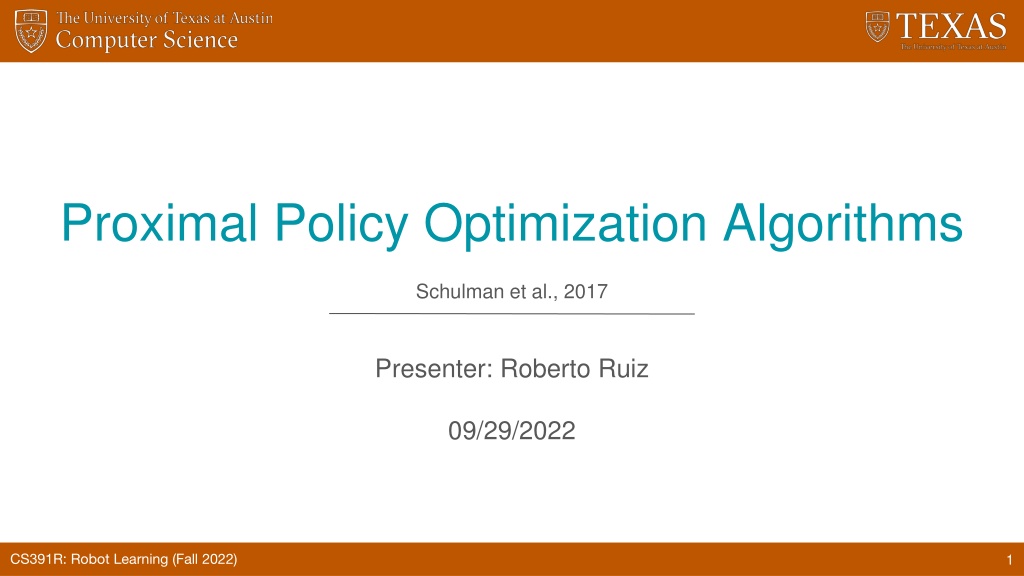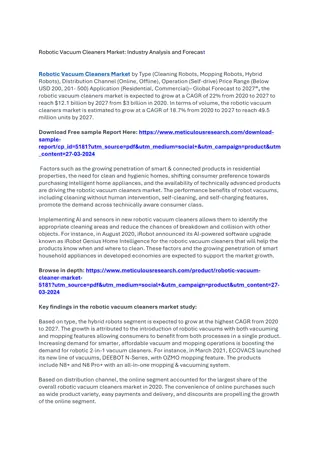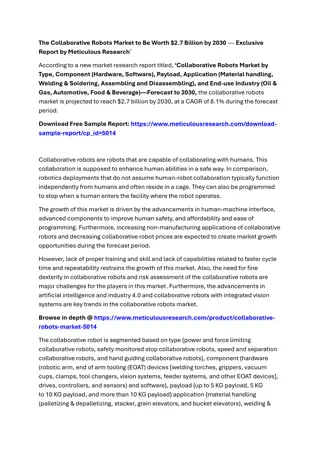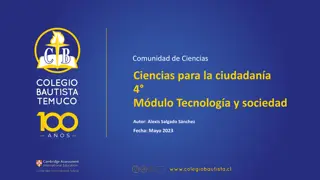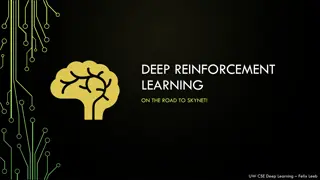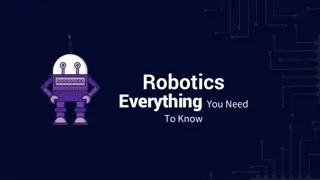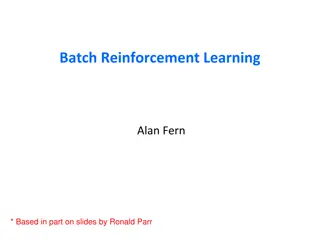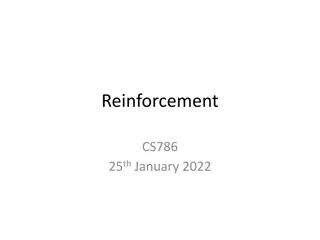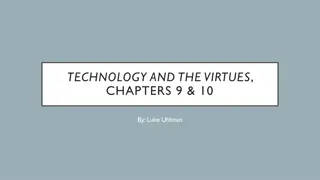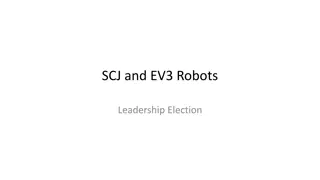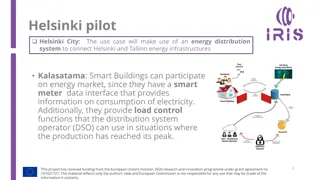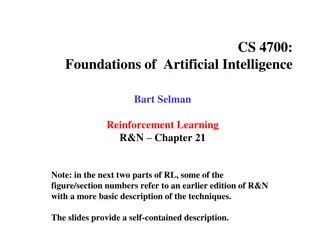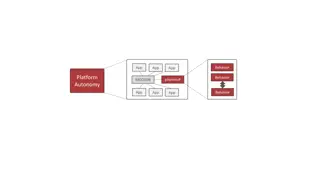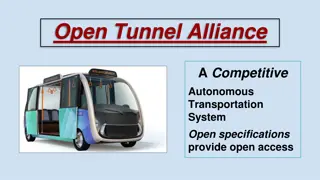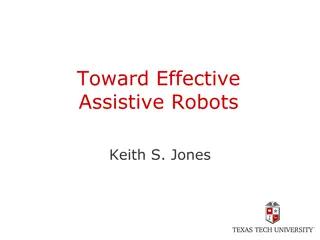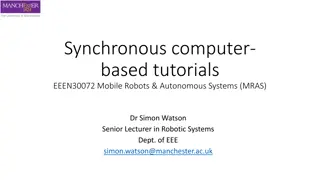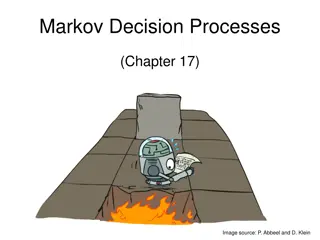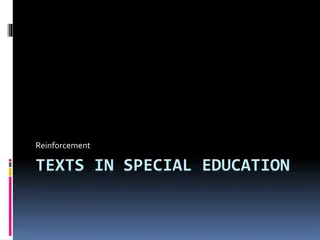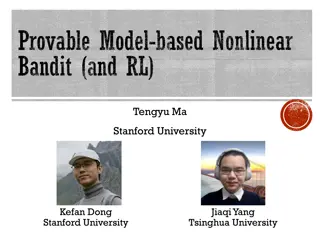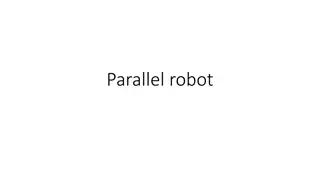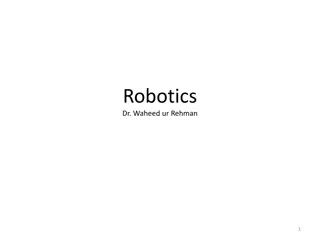Advanced Reinforcement Learning for Autonomous Robots
Cutting-edge research in the field of reinforcement learning for autonomous robots, focusing on Proximal Policy Optimization Algorithms, motivation for autonomous learning, scalability challenges, and policy gradient methods. The discussion delves into Markov Decision Processes, Actor-Critic Algorithms, and the limitations of policy gradient methods in achieving data efficiency and robustness.
- Reinforcement Learning
- Autonomous Robots
- Proximal Policy Optimization
- Policy Gradient Methods
- Scalability
Download Presentation

Please find below an Image/Link to download the presentation.
The content on the website is provided AS IS for your information and personal use only. It may not be sold, licensed, or shared on other websites without obtaining consent from the author. Download presentation by click this link. If you encounter any issues during the download, it is possible that the publisher has removed the file from their server.
E N D
Presentation Transcript
Proximal Policy Optimization Algorithms Schulman et al., 2017 Presenter: Roberto Ruiz 09/29/2022 CS391R: Robot Learning (Fall 2022) 1
Motivation Robots need suitable autonomous learning to achieve true autonomy Trial-and-error improvement to acquire new skills Learn in high-dimensional continuous state and actions spaces Understanding of human motor control Simulate human behavior Learn cost functions based on simulated human behavior CS391R: Robot Learning (Fall 2022) 2
Main Problem Need reinforcement learning (RL) algorithms that Scale to high-dimensional mechanical systems Handle parametrized policies (e.g. neural network function approximators) Data efficient Robust Ideally simple to implement CS391R: Robot Learning (Fall 2022) 3
Preliminaries Markov Decision Process (MDP) (S, A, P, r, 0, ) A finite set of actions S finite set of states P : S x A x S r : S 0 : S (0, 1) Actor-Critic Algorithms Approximations to both policy and value functions On-Policy vs Off-Policy On-policy evaluate or improve policy used to make decisions Off-policy evaluate or improve policy different from that used to make decisions CS391R: Robot Learning (Fall 2022) 4
Policy Gradient Methods Background Policy Gradient Methods for Reinforcement Learning with Function Approximation (Sutton et al., 2000) Gradient suitable estimation from experience Assisted by advantage function Convergence of policy iteration with function approximation Reinforcement learning of motor skills with policy gradients (Peters et al., 2008) Survey policy gradient methods Vanilla Policy Gradient Implementation Algorithm Documentation CS391R: Robot Learning (Fall 2022) 5
Policy Gradient Methods Compute estimator of policy gradient and plug into stochastic gradient ascent algorithm Objective differentiated CS391R: Robot Learning (Fall 2022) 6
Policy Gradient Methods Limitations Destructively large policy updates Poor data efficiency and robustness CS391R: Robot Learning (Fall 2022) 7
Trust Region Methods Background Trust Region Policy Optimization (Schulman et al., 2017) Initially proposed and proved monotonic improvement KL divergence constraint Robotic locomotion controllers learned from scratch Trust Region Policy Optimization Implementation Algorithm Documentation CS391R: Robot Learning (Fall 2022) 8
Trust Region Methods Trust Region Policy Optimization (TRPO) Surrogate objective maximized subject to constraint ( ) on policy update Suggest using penalty instead of constraint CS391R: Robot Learning (Fall 2022) 9
Trust Region Methods Limitations Complex second-order method Cannot choose fixed value of ? for KL penalty CS391R: Robot Learning (Fall 2022) 10
Proximal Policy Optimization (PPO) Policy update using multiple epochs of stochastic gradient ascent Stability and reliability of trust-region methods Simple implementation Probability ratio Conservative policy iteration (CPI) objective CS391R: Robot Learning (Fall 2022) 11
PPO CLIP Penalize deviations that move rt(?) away from 1 Main surrogate objective function If rt(?) Improves objective Exclude Worsens objective Include CS391R: Robot Learning (Fall 2022) 12
PPO KL DIVERGENCE Alternative to clipped surrogate objective Use penalty on KL divergence Adapt penalty dtarg CS391R: Robot Learning (Fall 2022) 13
PPO Algorithm CS391R: Robot Learning (Fall 2022) 14
Experiment: Comparison of Surrogate Objectives Surrogate objectives to be compared Parametrized policy Fully-connected MLP; two hidden layers (64 units); tanh nonlinearities; mean of Gaussian distribution output Seven simulated robotics tasks HalfCheetah, Hopper, InvertedDoublePendulum, InvertedPendulum, Reacher, Swimmer, Walker2d (-v1) One million timesteps (training) 21 runs; average total reward of last 100 episodes; normalized (random policy 0, best policy 1) CS391R: Robot Learning (Fall 2022) 15
Results: Comparison of Surrogate Objectives CS391R: Robot Learning (Fall 2022) 16
Experiment: PPO vs Continuous Domain Algorithms Compare PPO (clipped surrogate objective) with TRPO, CEM, vanilla policy gradient (adaptive stepsize), A2C, A2C (trust region) Seven simulated robotics tasks (from previous experiment) HalfCheetah, Hopper, InvertedDoublePendulum, InvertedPendulum, Reacher, Swimmer, Walker2d (-v1) One million timesteps (training) CS391R: Robot Learning (Fall 2022) 17
Results: PPO vs Continuous Domain Algorithms CS391R: Robot Learning (Fall 2022) 18
Experiment: PPO Showcase Continuous Domain 3D humanoid tasks RoboschoolHumanoid RoboschoolHumanoidFlagrun RoboschoolHumanoidFlagrunHarder Learning curves of three tasks CS391R: Robot Learning (Fall 2022) 19
Results: PPO Showcase Continuous Domain CS391R: Robot Learning (Fall 2022) 20
Experiment: PPO vs A2C vs ACER (Atari Domain) Arcade Learning Environment (49 games) Winner for each game defined by score metric Scoring metrics: Average reward per episode over entire training period Average reward per episode over last 100 episodes of training CS391R: Robot Learning (Fall 2022) 21
Results: PPO vs A2C vs ACER (Atari Domain) CS391R: Robot Learning (Fall 2022) 22
PPO Discussion of Results Empirically better overall performance Simpler first-order methods Stability and reliability of trust-region methods CS391R: Robot Learning (Fall 2022) 23
More on PPO Limitations Can get trapped in local optima Still possible to end up with new policy too far from old policy Extending PPO Code-level optimizations for better performance Tricks to avoid new policy being far off from old policy CS391R: Robot Learning (Fall 2022) 24
Extended Readings Reinforcement Learning An Introduction (Sutton et al., 2018) Function Optimization Using Connectionist Reinforcement Learning Algorithms (Williams et al., 1991) Policy Gradient Methods for Reinforcement Learning with Function Approximation (Sutton et al., 2000) Reinforcement learning of motor skills with policy gradients (Peters et al., 2008) Trust Region Policy Optimization (Schulman et al., 2017) Implementation Matter in Deep Policy Gradients: A Case Study on PPO and TRPO (Engstrom et al., 2019) Open AI Spinning Up Algorithm Documentation CS391R: Robot Learning (Fall 2022) 25
Summary Problem: Need RL algorithms that are scalable, handle parametrized policies, data efficient, robust, and ideally simple to implement Importance: Robots with suitable autonomous learning Limitations of prior work: Poor data efficiency and robustness; Destructively large policy updates; Complex second-order implementation Key insight: Empirically better than TRPO; As stable and robust as TRPO; Simple first-order implementation CS391R: Robot Learning (Fall 2022) 26
